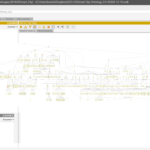 The present work for the Smart City Ontology (SCO 2.0) continues the efforts that started in 2015, integrates and re-uses many entities (classes, object properties, data properties) of the initial version (SCO 1.), but also has some important differences. The motivation for continuing the work on the smart city ontology has been the interest of the smart city community for an ontology of the smart city, and the many demands that we have received for providing the owl file of the SCO 1.0 to be used in other experiments related to smart cities.
The present work for the Smart City Ontology (SCO 2.0) continues the efforts that started in 2015, integrates and re-uses many entities (classes, object properties, data properties) of the initial version (SCO 1.), but also has some important differences. The motivation for continuing the work on the smart city ontology has been the interest of the smart city community for an ontology of the smart city, and the many demands that we have received for providing the owl file of the SCO 1.0 to be used in other experiments related to smart cities.
The most important differences of the SCO 2.0 are about (a) the use of the Basic Formal Ontology (BFO) as a high-level ontology to guide the creation of a domain-specific ontology for the smart city, and (b) the aim of the ontology development.
The aim of the SCO 2.0 is to provide a better understanding and description of the smart/intelligent city landscape; identify main components and processes, the terms used to describe them, their relationships; clarify key processes related to the integration of the different dimensions of the smart city, mainly the physical, social, and digital dimensions. Also, we have two specific goals. First to help researchers and smart city developers identify areas in which smart technologies and solutions may improve the e-services that smart cities provide. Smart cities evolve by integrating digital and non-digital city elements and identifying virgin areas of digital transformation may help to create new smart city solutions for the optimization of assets and the design of innovative e-services. Second to provide a framework for more extensive work on the smart city ontology, leading to a full SCO from the community of researchers working in this field.
The smart city is becoming the standard model for the design and development of 21st-century cities, and the SCO is a fundamental pillar for the development of this city paradigm, which is very complex due to interdisciplinary contributions from fields of engineering, information technology, and social sciences.
SCO 2.0 contains 918 classes, 66 object properties, 197 data properties, and 27 individuals. Compared to SCO 1.0, the main changes are the increase in the number of entities, the layers of the hierarchy, and the 1st-level universals (concepts) that define its structure and relationships.
Both the latest versions of the discussion paper and the owl file are available from the Google Drive – SCO 2.0
(https://drive.google.com/drive/folders/1i5pkxB310DlnJ7Y3CXxCUsYGHlGlL01g?usp=sharing)
Comments for change, contribution, or participation to the further development of the Smart City Ontology, please contact any author of this discussion paper at the email below:
Nicos Komninos: komninos@urenio.org
Anastasia Panori: apanori@urenio.org
Christina Kakderi: christina@urenio.org

